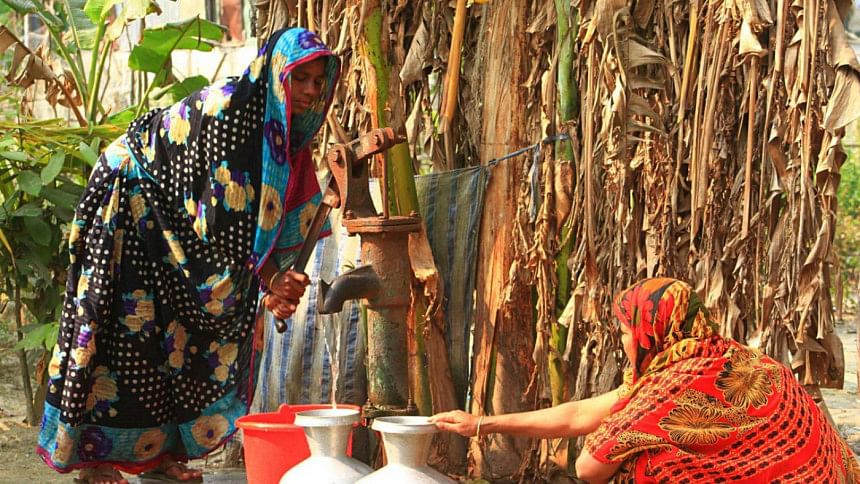How to ensure smooth transition after LDC graduation

This is part five of a series of articles based on the Centre for Policy Dialogue's (CPD) research on Bangladesh's graduation out of the LDC group. Read the first, second, third and fourth parts.
Bangladesh will cross a number of milestones during its implementation of the Sustainable Development Goals (SDGs). The first five years of the SDGs coincide with the last five years of implementation of the Istanbul Programme of Action (IPoA) for the least developed countries (LDCs) for the 2011-20 period, which aims to halve the number of LDCs by 2020.
Bangladesh has become eligible for graduation at the 2018 triennial review of the Committee for Development Policy of the United Nations Economic and Social Council given its progress in gross national income (GNI) per capita, the Human Assets Index (HAI) and Economic Vulnerability Index (EVI). While this is a remarkable achievement for Bangladesh, it is important that the country graduates with momentum to avoid the pitfalls of the post-graduation phase. Development of productive capacity and structural transformation are key factors for graduation. On the face of it, Bangladesh's efforts towards implementation of the SDGs may facilitate graduation since several objectives of the IPoA and the SDGs have commonalities. Many of the SDGs are also similar to Bangladesh's objectives laid out in its Seventh Five Year Plan (7FYP). Thus, as Bangladesh works towards fulfilling its objectives through national policies, efforts may also help achieve several SDGs.
SDGs and LDC graduation
On the one hand, there are 169 targets under 17 SDGs that consider the economic, social and environmental pillars of sustainability. On the other hand, there are three LDC graduation criteria. GNI per capita points to a country's income status and is widely referred to as the "income criterion"; the HAI measures the level of human development; and the EVI indicates a country's structural vulnerabilities to exogenous economic and environmental shocks. Sixty targets under 13 SDGs have clear potential linkages with GNI per capita.
Indicators under the HAI mainly measure human development, specifically health and education. In addition to direct connections between HAI indicators and SDG targets, HAI indicators can be connected with SDGs on poverty, hunger and social protection, which are basic needs that must be addressed in the human development process. A total of 17 targets under six SDGs have connections with the HAI that relates to health and education. While SDGs 3 (health) and 4 (education) have explicit indicators on human development, SDG 1 (poverty), SDG 2 (hunger and nutrition), SDG 6 (access to safe water and sanitation), and SDG 10 (inequality) also have some linkages with the HAI. For example, SDG target 2.1, which refers to ending hunger and ensuring access to nutritious food, has a linkage with HAI indicator "percentage of population undernourished".
EVI indicators are mainly related to natural disaster, climate change, export concentration and instability, agricultural output and instability, population and remoteness. SDG target 2.3, which refers to doubling agricultural productivity, has linkages with the EVI indicators "share of agriculture, forestry and fisheries in GDP" and "instability of agricultural production". The income criterion also has linkages with SDG target 2.3. Though indicators under the EVI are not directly linked to the SDGs, but 31 targets under 12 SDGs are indirectly linked with the EVI. Thus, it is expected that implementation of these SDGs will support progress on the EVI as well.
The United Nations Conference on Trade and Development (UNCTAD) outlined a number of policies that a country needs to pursue to graduate with momentum from the LDC category, with the justification being that graduation should be seen as a long-term development process rather than a narrow objective in a statistical sense. It identified six broad areas for action and highlighted gender as a cross-cutting issue for continuing development beyond the graduation milestone: rural transformation; industrial policy; science, technology and innovation policy; development finance; macroeconomic policies; and employment generation. Commonalities between these seven areas and the SDGs are evident. A total of 50 SDG targets were found to be related with the seven key areas of UNCTAD's "graduation-plus" strategies for graduation with momentum.
SDGs and IPoA
A detailed matching exercise comparing the IPoA priority areas and SDGs indicates that all areas covered by the IPoA are also included in the SDGs. While the SDG framework includes goals, targets and indicators, the IPoA has goals, targets and actions. The priority areas of the IPoA include: productive capacity; agriculture, food security and rural development; trade; commodities; human and social development; multiple crises and other emerging challenges; mobilising financial resources for development and capacity-building; and good governance at all levels. The actions for implementing the IPoA goals and targets are categorised into three groups: joint actions by LDCs and developed countries, actions by LDCs, and actions by development partners. Despite differences in terms of approach, coverage, targets and indicators, both the IPoA and the SDGs have the common objective to eradicate poverty. Linkages between SDG targets and IPoA goals, targets and selected actions show that 83 SDG targets have connections with the IPoA.
SDGs and national policies
Six SDG targets match completely with national policies, 40 SDG targets match partially, 37 targets do not match directly with national policies but have some similarities in essence, and 21 SDG targets have no alignment with the 7FYP. However, 12 SDG targets of these 21 non-aligned SDG targets are reflected in some other sectoral policies. Another 26 SDG targets have to be pursued through global initiatives.
Bangladesh has to pursue global and national objectives simultaneously due to various linkages among many of their indicators. While the achievement of a few objectives in one framework may help achieve some in another framework, equal efforts should be put into all global and national commitments. Bangladesh must also pay attention to the SDG targets that are not reflected in its national and sectoral policies for smooth transition after LDC graduation.
Fahmida Khatun, Shahida Pervin and Masudur Rahman are, respectively, the Executive Director, Research Associate, and former Research Associate of the Centre for Policy Dialogue (CPD).





Comments